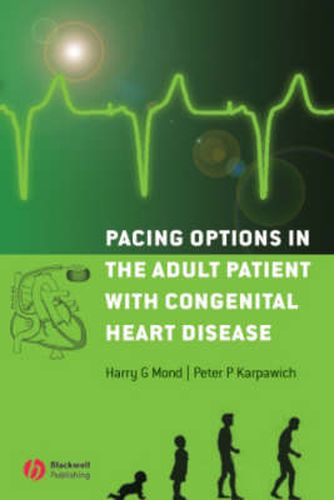Readings Newsletter
Become a Readings Member to make your shopping experience even easier.
Sign in or sign up for free!
You’re not far away from qualifying for FREE standard shipping within Australia
You’ve qualified for FREE standard shipping within Australia
The cart is loading…






Finally, this is a pacing book dedicated to the adult patient with CHD. Drawing on their vast experience, Drs. Mond and Karpawich join forces to show you what to do, how to do it, and what to avoid. Building on more than 60 years of device therapy, Pacing Options in the Adult Patient with Congenital Heart Disease leads you through the many congenital heart defects now seen in adults. This essential resource: describes the various anatomical characteristics of repaired and non-repaired congenital heart defects and compares these with the normal anatomy, allowing you to easily identify the differences; and guides you through the implant techniques, highlighting the specific problems that might be encountered and providing proven techniques to overcome technically difficult anatomical variations in patients with and without congenital heart disease. Throughout the book, schematic diagrams of the diverse anatomy of the congenital heart support the textual descriptions, and x-rays and fluoroscopic images illustrate the physiology and maximize understanding.
$9.00 standard shipping within Australia
FREE standard shipping within Australia for orders over $100.00
Express & International shipping calculated at checkout
Finally, this is a pacing book dedicated to the adult patient with CHD. Drawing on their vast experience, Drs. Mond and Karpawich join forces to show you what to do, how to do it, and what to avoid. Building on more than 60 years of device therapy, Pacing Options in the Adult Patient with Congenital Heart Disease leads you through the many congenital heart defects now seen in adults. This essential resource: describes the various anatomical characteristics of repaired and non-repaired congenital heart defects and compares these with the normal anatomy, allowing you to easily identify the differences; and guides you through the implant techniques, highlighting the specific problems that might be encountered and providing proven techniques to overcome technically difficult anatomical variations in patients with and without congenital heart disease. Throughout the book, schematic diagrams of the diverse anatomy of the congenital heart support the textual descriptions, and x-rays and fluoroscopic images illustrate the physiology and maximize understanding.